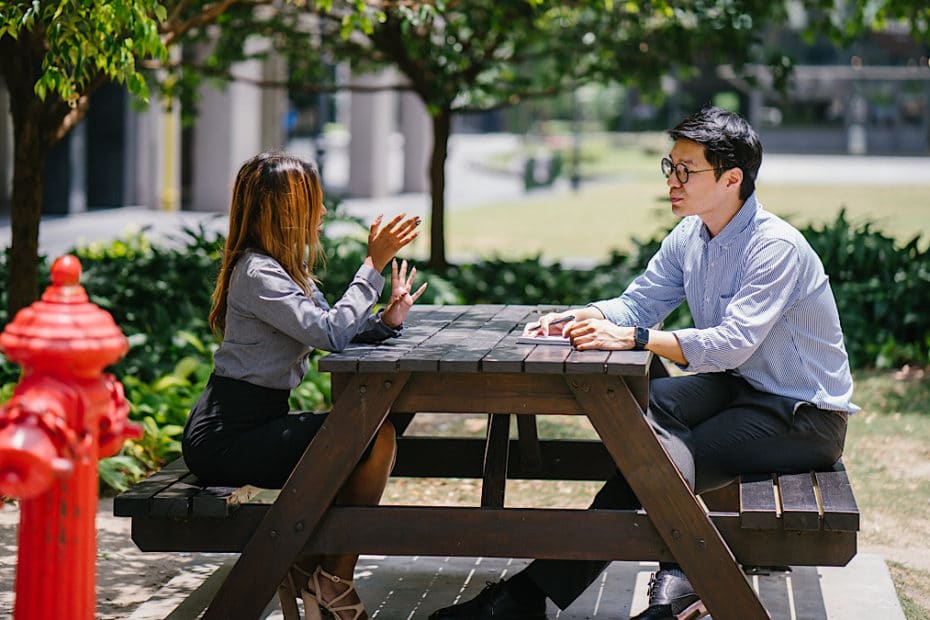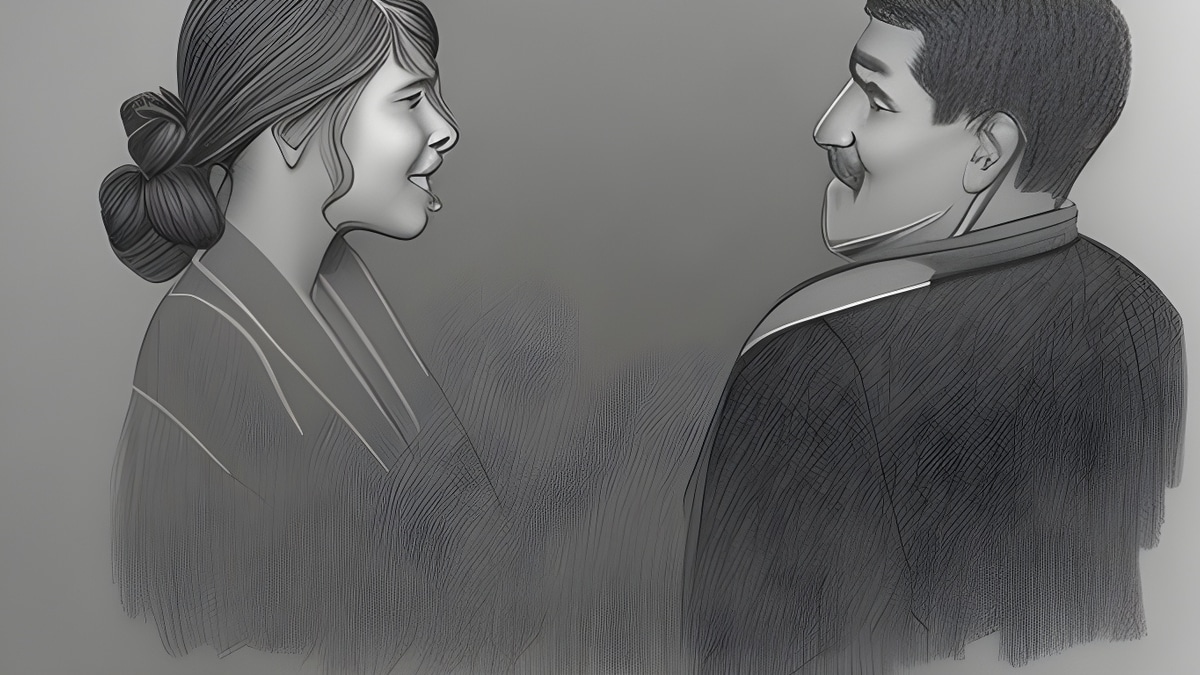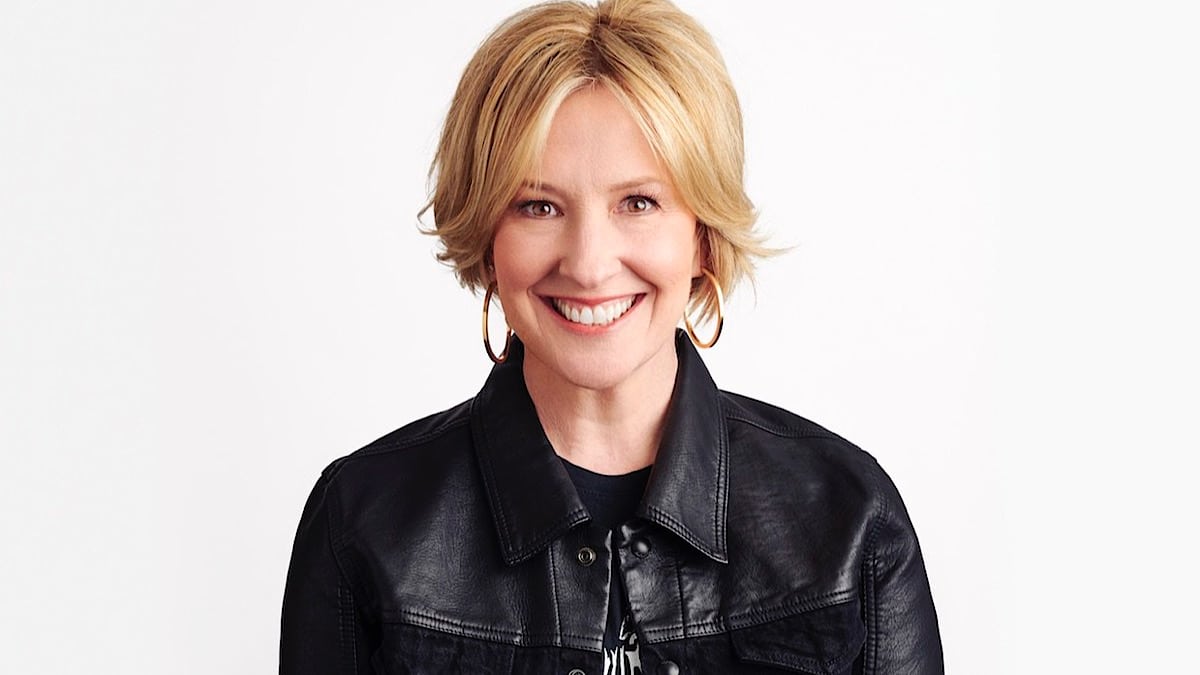Excerpt: Learning how to have great conversations starts with having a great mindset. Our 7 steps help you build exactly that. A must read for sure.
“Hi, how are you doing?”
“Good – how about you?”
“Good.”
*Conversation over*
How many times do you engage in a conversation like that during a typical day? My guess is too many times. What does an exchange like that accomplish? Not much. Why do we default to such a superficial conversation? Because it’s safe, familiar, and comfortable. Or because you genuinely don’t want to have a deeper conversation with that person – which is perfectly fine – but that’s beyond the scope of this post!
This post is about strengthening the human connection and getting to know the people in our lives a little better – by re-examining the way we start and maintain conversations.
Wrap your head around the idea that there never has been and never will be another, “you” for the rest of eternity. Like, ever again… ever. It would be such a waste to, for even a single day, miss the opportunity to explore that incredible diversity and see people for who they truly are.
Yet, many of us continue to do just that on a regular basis by engaging in, “good” conversations. The trouble is that some of us have become so trapped and paralyzed with fear that “superficial” has become the norm. What a terrible thought.
My challenge for you is simple: Have the courage to go beyond, “good” and start conversations that matter. To seek and to dig deeper into the depths of another person’s being. To ask interesting questions and to respond with more thought-provoking answers. Because here’s the mastery mindset: When you ask the right questions, you’ll discover how truly fascinating people are.
Let’s kick-start the thinking process and create a list of creative, engaging, open-ended questions that might lead to deeper responses from the people in our lives. I’ll leave you with six ideas that have worked for me.
NEW In The Shop: Don’t Let The Tame Ones Tell You How To Live [Poster]
Why We ♥ It: Some of the best advice I (Matt here) ever got was: don’t take life advice from people who aren’t living a life you want to live and don’t take criticism from people you wouldn’t go to for advice. I created this poster to act as a reminder to listen more closely to our role models and less closely to our critics, trolls, and tamed-comfort-zone-hugger acquaintances. It’s also a perfect gift for the outdoor adventurer, travel enthusiast, or solo explorer (or soon to be). Available in print or digital download. 👇🏼
...Want to advertise your book, product, or service? Send inquiries to matt@movemequotes.com.
Six conversation starters to go beyond, “good”:
- Question: “Hey, what’s good in your life today?”
- Question: “Hey, it’s good to see you again! What’s new and exciting?”
- Question: “Hey! You know, I see you all of the time and feel like I hardly ever have a real conversation with you. Tell me something about yourself that not many people know…”
- Response: “Hi, how are you doing?” – “I’m alive, well, and ready for the challenges of the day! Are you?”
- Response: “Hi, how are you doing?” – “I’m doing by smiling, staying present, and looking at the bright side! How are you doing?
- Response: “Hi, how are you doing?” – “You know what? I’m doing really good today because (fill in the blank)! How about you? What’s making your day good?”
Brace yourself though, because this involves risk taking
We are programmed to avoid anything uncomfortable, awkward, and embarrassing.
…What if I ask them a question that is perceived as awkward?
…What if the person thinks I’m weird and doesn’t respond?
…What if while we’re engaged in conversation, we uncomfortably come to a stand still and nobody has anything to say?
But when you think about it on a bigger level, all are minuscule risks when compared to the bigger risk at play:
…What if, by never going beyond, “good,” we never get to know anybody for who they truly are?
Woah.
You’d be surprised how far a simple, open-ended, interesting, and thought-provoking question can go.
…And you never know what it might lead to.
Finally, I’d like to leave you with seven tips that will help you build and maintain a great conversation after you’ve gone beyond, “good” with your opener.
These following seven tips were written by Jonathan Fields in the book How To Live A Good Life.
Give them a read and pay close attention to any notes that make you smile, nod, or think a little deeper—those are the areas that will offer you the best opportunities for growth!
The List: How To Have Great Conversations (The 7 Steps):
1) Set your intention to give, not take. Many people move into social situations looking to get something. Others will smell that on you from a mile away. It reads as aggression and self-interest, even if you don’t say a word. A thousand subtle cues telegraph your intent. Before you begin, say to yourself, “How can I serve?” From that place it comes nearly impossible to leave as a loser.
2) Give your undivided attention. Spend more time looking into someone’s eyes than you do looking over their shoulders. Undivided attention is such a rarity these days, people crave it desperately. When it is offered, it is often experienced on the level of a gift. Give that gift.
3) To be interesting, be interested. Counterintuitive as it may sound, you don’t need to say much to be interesting. You just need to ask the right questions. Most people will find you interesting if you are deeply interested in them. Stop thinking about what to talk about; start thinking about what to ask.
4) Lead with different questions. Do you really care about what someone does? Then why is that the most asked opening question on the planet (behind “What’s your sign?” of course!)? People want to talk about what they’re sparked by. If that happens to be their career, great. But sadly, more often than not, someone’s job is not the same as their Spark. Ask questions designed to elicit their Spark. Some starters:
- What’s holding your interest these days?
- What have you read (or seen, or heard, or been working on) that excites you?
- So tell me about (subject you know the person cares about).
5) Ask, listen, pause, and ask. Once you’ve asked questions that elicit someone’s Spark, stop talking. Let them talk, and just listen. Really listen. When I record conversations, I don’t bring a script ,and I rarely even have any preset questions. The more scripted I am, the less I listen, the less I hear and see what really matters to my guest, and the less I’m able to respond to moments, ideas, tangents that almost always hold the best parts of the conversation. Don’t think ahead to what you’re going to ask next. Just listen. When your partner is done, pause for a moment, then respond to what was offered and ask another question. If, after a few rounds, neither of you is drawn in, then either it’s not a great connection or you haven’t truly found their Spark, in which case, see item 4.
6) Notice what’s not being said. The vast majority of communication is nonverbal. Studies have found that words account for only 10 to 30 percent of communication. What makes up the other 70 to 90 percent? Nonverbal cues, like body language, facial expressions, vocal cadence and intonation, breaking, physical positioning. Learn to see and hear not just what’s being spoken, but what’s being said beyond words. If someone is constantly looking around while you’re speaking, you’re not holding their attention. Look at their body. If their feet are turned away from you, they’re just waiting for a chance to exit. Are they leaning in (engaged), leaning back (aloof), arms open and animated (excited), arms crossed (closed and defensive)? You can study up on so much of this, but truth is, if you just pay attention, people’s subtler cues are pretty easy to translate, and they often speak far more loudly than anything they’re actually saying.
7) Practice mindfulness. You can try out and experience the effect of the above six tips in just a matter of seconds. This final one, though, is a longer-term game. It’s about cultivating a mindfulness practice that increases your moment-to-moment awareness of both social cues and your own inner storyteller.
Remember: One conversation can change everything.
Be brave enough to start (and maintain) a conversation that matters.
If you enjoyed this post on learning how to have great conversations, you can find more quotes and resources from How To Live A Good Life below:
Book Overview: Seriously . . . another book that tells you how to live a good life? Don’t we have enough of those? You’d think so. Yet, more people than ever are walking through life disconnected, disengaged, dissatisfied, mired in regret, declining health, and a near maniacal state of gut-wrenching autopilot busyness. How to Live a Good Life is your antidote; a practical and provocative modern-day manual for the pursuit of a life well lived. No need for blind faith or surrender of intelligence; everything you’ll discover is immediately actionable and subject to validation through your own experience.
Buy from Amazon! Listen on Audible!
Great on Kindle. Great Experience. Great Value. The Kindle edition of this book comes highly recommended on Amazon.
Read Next:
NEW In The Shop: Don’t Let The Tame Ones Tell You How To Live [Poster]
Why We ♥ It: Some of the best advice I (Matt here) ever got was: don’t take life advice from people who aren’t living a life you want to live and don’t take criticism from people you wouldn’t go to for advice. I created this poster to act as a reminder to listen more closely to our role models and less closely to our critics, trolls, and tamed-comfort-zone-hugger acquaintances. It’s also a perfect gift for the outdoor adventurer, travel enthusiast, or solo explorer (or soon to be). Available in print or digital download. 👇🏼
...Want to advertise your book, product, or service? Send inquiries to matt@movemequotes.com.

Written by Matt Hogan
Founder of MoveMe Quotes. On a mission to help busy people do inner work—for better mental health; for healing; for personal growth. Find me on Twitter / IG / Medium. I also share daily insights here. 🌱
It has taken me 1,000’s of hours to build this free library for you. If it has helped you, you can support my continued effort here. ☕️







